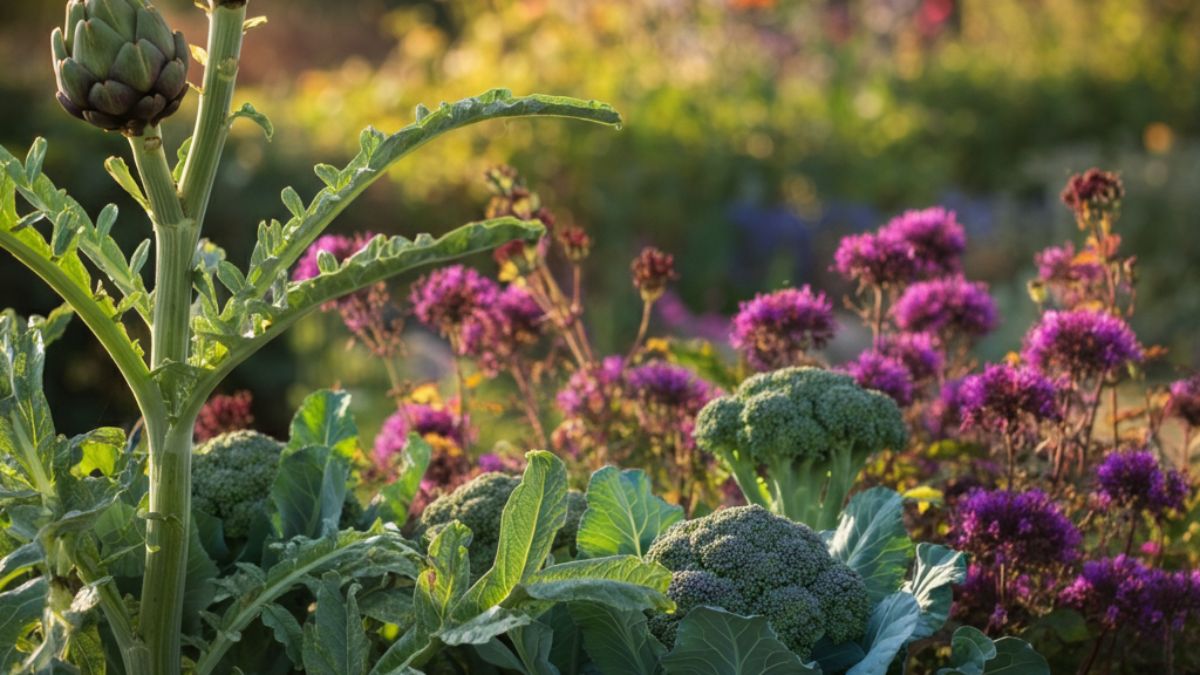When people think of vegetables, flower vegetables might not be the first that come to mind. But did you know that some of the most commonly consumed and nutrient-packed foods belong to this category? From broccoli to cauliflower and artichokes, flower vegetables are not only delicious but are also loaded with health benefits.
This blog dives into the fascinating world of flower vegetables, exploring what they are, the nutritional value they offer, and how to incorporate them into your meals. If you’re eager to boost your health while enjoying flavorful and versatile ingredients, you’re going to love learning more about these blossoming vegetable.
What Are Flower Vegetables?
Flower vegetables are exactly what they sound like—vegetables that come from the flowering parts of plants. Unlike leafy greens, roots, or tubers, flower vegetables are harvested from the flowering portion of the plant before they fully bloom or seed. Interestingly, these edible blooms often pack as many nutrients as their roots and leaves—sometimes even more!
Some of the most familiar examples of flower vegetables include:
- Broccoli
- Cauliflower
- Artichokes
- Zucchini Flowers
- Cabbage Flower Sprouts
- Romanesco
These vegetables are not only visually unique but also offer a delightful mix of textures and flavors.
Nutrition and Health Benefits of Flower Vegetables
Flower vegetables are more than a pretty addition to your plate. They are nutritional powerhouses that bring numerous health benefits. Here’s a closer look at why you should consider adding them to your diet.
High in Vitamins and Minerals
Flower vegetables are bursting with essential vitamins and minerals. Broccoli, for example, is a rich source of Vitamin C, which helps boost the immune system, and Vitamin K, which is essential for bone health. Similarly, cauliflower contains high levels of folate and potassium, which play vital roles in regulating cell growth and keeping your heart healthy.
Packed with Antioxidants
Many flower vegetables, such as cauliflower and Romanesco, are rich in antioxidants like sulforaphane, which promotes cellular repair and protects tissues from damage. These compounds help combat free radicals in the body, reducing the risk of chronic diseases like cancer and heart disease.
High Fiber Content for Digestive Health
Artichokes are one of the richest vegetables in dietary fiber, offering tremendous benefits for digestive health. Fiber not only keeps you full for longer but also supports a healthy gut microbiome, which is central to overall well-being.
Low in Calories and High in Nutrients
If you’re watching your weight or looking for nutrient-dense foods, flower vegetables are an excellent choice. They are naturally low in calories while being highly satisfying due to their fiber and water content.
Anti-inflammatory Properties
Some flower vegetables, like broccoli, have shown anti-inflammatory effects, helping individuals manage conditions such as arthritis and diabetes.
5 Popular Flower Vegetables and How to Use Them
Getting started with flower vegetables is simpler than you think. Here are five popular examples and their best uses in cooking.
1. Broccoli
Broccoli is versatile and can be steamed, roasted, grilled, or even eaten raw in salads. Try roasting it with garlic and olive oil for a crispy, flavorful side dish.
2. Cauliflower
Cauliflower’s mild flavor makes it ideal for mashing, grilling, and even as a low-carb substitute for rice or pizza crust. Make a comforting cauliflower soup or spicy roasted cauliflower bites.
3. Artichokes
Cooking artichokes might feel intimidating, but steamed artichoke hearts paired with a lemon-butter dip are worth the effort. They’re also great in creamy dips or tossed into pasta dishes.
4. Romanesco
With its intricate and geometric florets, Romanesco is often called a “designer broccoli.” Its nutty, slightly sweet taste works well when roasted or sautéed with herbs and spices.
5. Zucchini Flowers
Zucchini flowers are a delicacy often stuffed with cheese and lightly fried. They can add a touch of elegance and flavor to any dish.
Tips for Purchasing and Storing Flower Vegetables
To get the most out of your flower vegetables, follow these tips when shopping and storing them.
Choose Fresh and Crisp
When purchasing, look for vegetables that appear fresh, firm, and vibrant in color. Avoid any with signs of wilting, browning, or sliminess.
Store Properly
- Refrigerate: Most flower vegetables stay fresh longer when stored in the refrigerator in breathable bags.
- Use Quickly: While they can last for a week or more, it’s best to consume them within a few days of purchase to maximize their nutrients and flavor.
Wash Before Using
Rinse your vegetables thoroughly before cooking to remove any dirt or pesticide residues, especially between florets.
3 Easy Recipes Featuring Flower Vegetables
Looking for ways to get more flower on your plate? Here are three quick and delicious recipes to try.
1. Roasted Cauliflower Steaks
- Slice cauliflower into thick “steaks,” brush with olive oil, and sprinkle with paprika, garlic, and salt.
- Roast at 400°F (200°C) for about 25 minutes until golden brown.
- Serve with a dollop of yogurt or tahini sauce.
2. Broccoli and Cheddar Soup
- Sauté onions and garlic in a pot, then add chopped broccoli and vegetable broth.
- Simmer until tender, blend into a smooth soup, and mix in shredded cheddar cheese.
- Season with salt, pepper, and a pinch of nutmeg.
3. Artichoke Pasta
- Cook pasta according to instructions.
- Toss with sautéed artichoke hearts, olive oil, garlic, parsley, and a squeeze of lemon juice.
- Top with grated Parmesan for a simple, elegant dinner.
Why You Should Incorporate Flower Vegetables into Your Diet
Flower vegetables bring immense variety, flavor, and nutrients to the table. Whether you’re looking to add more fiber to your diet, lower your calorie intake, or simply try new and exciting foods, flower are your ally in eating healthily and deliciously.
By diversifying your plate with broccoli, cauliflower, zucchini flowers, and more, you’re not only reaping countless health benefits but also supporting sustainable farming by choosing whole, fresh produce.
Start experimenting with flower vegetables in your next meal—you’ll be amazed at how versatile and satisfying these blossoming veggies can be.
Flower Vegetables and Sustainability
Flower vegetables are not only a nutritious addition to your diet but also a sustainable choice for environmentally conscious eating. Many of these vegetables, like broccoli and cauliflower, are relatively low-impact crops that require fewer resources to grow compared to other foods. Choosing locally-sourced vegetables further reduces the carbon footprint caused by transportation and storage, while supporting local farmers and communities.
Additionally, incorporating vegetables into your meals helps reduce food waste since nearly all parts of these plants can be utilized. Leaves, stalks, and even peels can be repurposed into broths, stir-fries, or compost for your garden. By adopting a no-waste approach with flower , you’re actively contributing to a more sustainable food system.
Consuming flower aligns with an eco-friendly lifestyle, proving that making small changes in your diet can lead to significant environmental benefits. From their reduced environmental impact to their versatility in reducing waste, flower vegetables play a vital role in fostering a greener planet.
Fun Facts About Flower Vegetables
Flower vegetables are more fascinating than they might seem at first glance. Here are some fun facts to deepen your appreciation for these nutritious plants:
- Broccoli’s Ancient Roots: Broccoli has been cultivated for over 2,000 years, originating from the Mediterranean region, where it was considered a prized food by the Romans.
- Cauliflower’s Colors: Although white is the most common color, cauliflower can also be found in vibrant shades of purple, orange, and green, each with its own unique nutrient profile.
- Zucchini Flowers’ Versatility: Zucchini flowers are not just edible but are also packed with vitamin C and antioxidants, making them a flavorful and nutritious addition to your plate.
- Romanesco’s Math Connection: Romanesco’s mesmerizing spirals follow the Fibonacci sequence, making it a beautiful example of natural patterns in mathematics.
- Artichoke as a Bloom: Artichokes are actually unopened flower buds of a thistle plant. If left to bloom, they produce striking purple flowers.
By learning more about flower vegetables and their unique qualities, you can better appreciate the hidden wonders they bring to both your kitchen and the environment.







